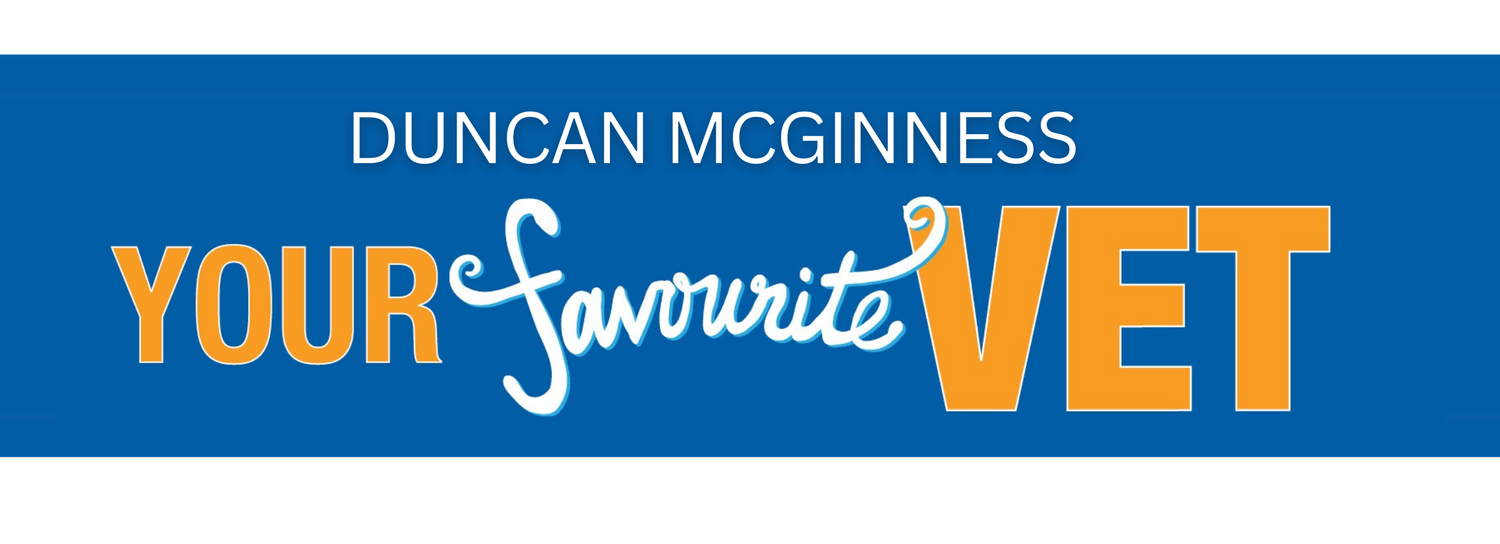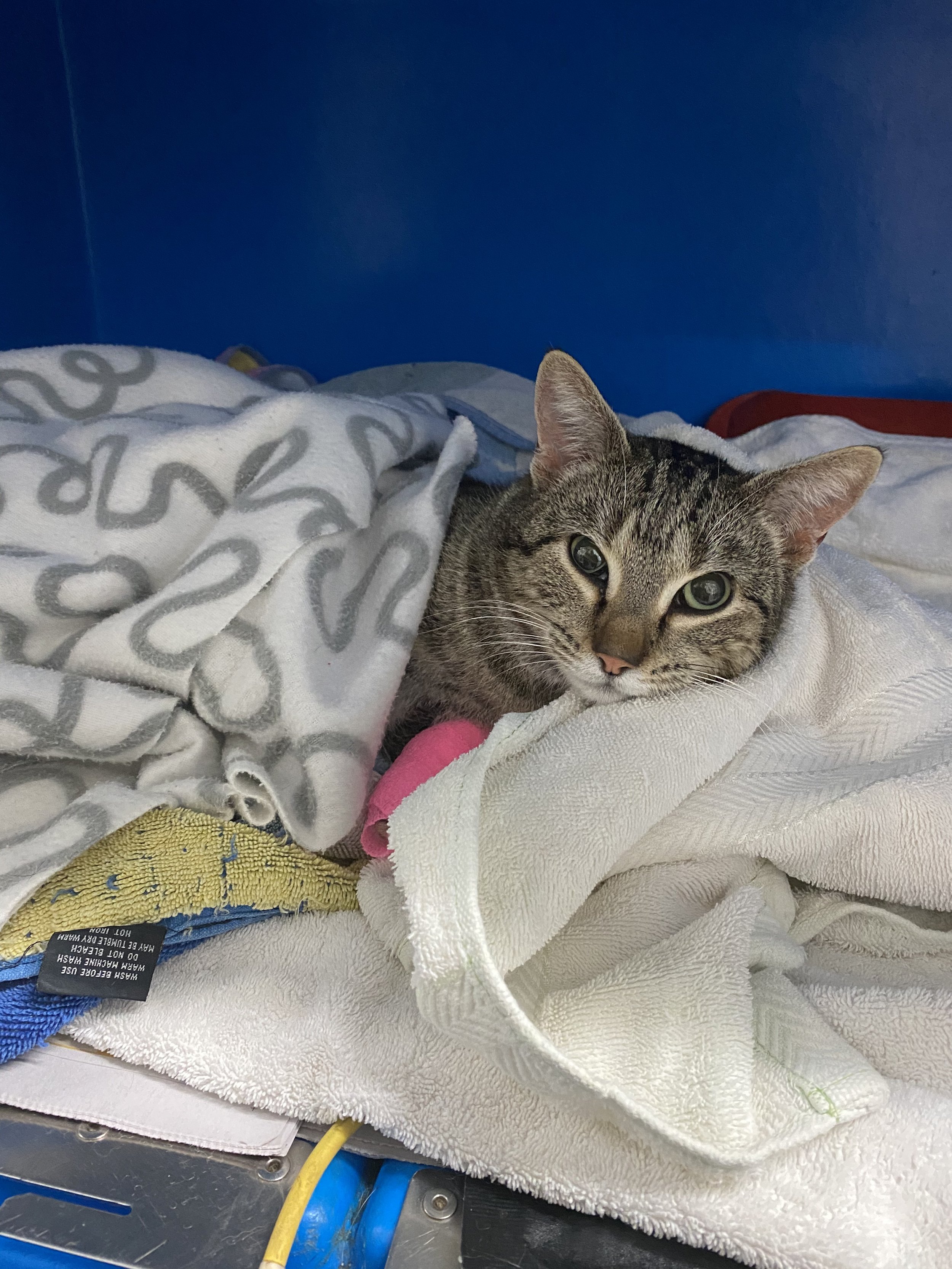Surgery
We’ve got you covered right from preparing for the procedure, through to post-surgery care at home.
A guide to surgery at Your Favourite Vet
We perform a wide range of routine, elective and emergency surgical procedures in our clinic.
Below is your guide to the surgical services we offer, our processes, and what to expect during your pet's recovery.
For pre-surgery information and preparation tips, please refer to the section below to ensure a smooth experience for both you and your pet.
TYPES OF SURGERIES
We perform many surgical procedures in house here. Some examples are briefly described below.
-
Spey (females) and castrate (males): This is the removal of the ovaries and uterus (spey), or removal of the testicles (castrate). These are the most common procedures we perform here. This is a day surgery.
Please see our specific precautions for Desexing female pets in the ‘Pre-surgery Information’ section of this page.
-
This is routine cleaning of the teeth, without any surgery (extractions or restorations) being performed. All dental procedures are performed under general anaesthesia. This is also a day surgery.
-
This can involve anything from eye surgeries (e.g. entropion), upper airway surgery and orthopaedic surgeries. These procedures involve an initial consultation and discussion about the procedure. An estimation of cost can be provided at this consultation. The length of hospital stay will be dependent on the procedure performed.
-
Emergency procedures are just that – emergencies. These are often related to trauma (eg being hit by cars and dog fights), or other causes, eg infection, internal bleeding, twisting gut and many more. These cases often involve a lot of medical and surgical care.
PRE-SURGERY STEPS
PREMEDICATION
Animals are premedicated prior to their anaesthetic and surgery.
-
The purpose of this premedication is to provide analgesia (pain relief) prior to any surgical (painful) stimulation, and to provide sedative effects to the body so the body accommodates the anaesthetic more smoothly and easily.
-
A full physical examination is performed on every patient prior to this premedication to assess the health of that patient at that particular point in time, and their suitability for the procedure to be undertaken.
ANALGESIA
Pain relief is initially provided within the premedication, as described above and additional analgesia is sometimes administered during the procedure.
-
Local nerve blocks during dental procedures.
-
We always administer analgesia after the procedure in a long acting pain relief injection. This lasts for 24 hours. These different modes of analgesia allow your pet to have the most comfortable procedure as possible.
Depending on the procedure, pain relief may be continued at home in the form of tablets or a liquid. This is generally the case for particularly painful procedures, or those with a lot of inflammation and swelling at the site of the surgery (eg an abscess).
ANAESTHESIA
Your pet is anaesthetised by a veterinarian and assisted by a nurse.
-
First, an intravenous (IV) catheter is placed, and the induction anaesthetic agent is administered into a vein. The pet is then intubated with an endotracheal tube (breathing tube), and connected to a gas anaesthetic machine. This gas machine will maintain your pet under anaesthetic for the duration of the procedure.
-
A nurse monitors your pet under anaesthesia under the direct supervision of the operating vet. We have a number of monitors that are connected up to your pet while under anaesthesia, which help us to detect any changes in your pet. Your pet is never left alone while under general anaesthesia, there is always at least one person present at all times.
-
There is a risk with every anaesthetic and surgical procedure. This risk is low in young and healthy animals, and is increased in older animals, sick animals, debilitated animals, or animals with chronic disease (e.g. heart disease, kidney disease, diabetes, Cushings disease, etc.). In our pre-anaesthetic examination performed prior to anaesthetic, where we assess the individual patient’s anaesthetic risk, and can identify some of these problems.
We will often recommend pre-anaesthetic blood tests and other diagnostic tests which can further identify potential problems and risk factors prior to the anaesthetic. These tests are usually only recommended in the higher risk patients (older or sick).
Despite the higher risk of anaesthetic complications in some of these patients, we rarely have catastrophic complications. We select drugs and dosages that are very safe for patients, and we continuously monitor the patient throughout the entire anaesthetic, so that any problems are identified immediately. Most of the time, the benefit of a particular procedure (e.g. a dental procedure to remove rotten and painful teeth in an old dog) far outweighs the risk of the anaesthetic.
If you have any questions regarding a surgical or anaesthetic procedures, please do not hesitate to contact the clinic on 02 6884 9900.
RECOVERY
After the procedure, patients are transferred to our recovery cages, where a Recovery Nurse stays with them continuously until they are able to control their airways.
-
After the procedure, patients are transferred to our recovery cages, where a Recovery Nurse stays with them continuously until they are able to control their airways.
-
You need to have a clear understanding of any medications that are required, as well as any special diet or exercise (or restriction of exercise!) requirements. Our staff will give you all the information you need.
If there are any problems relating to an anaesthetic or surgery, it is so important that you contact us immediately
PRE-SURGERY INFOMATION
If your pet has been booked in for surgery, the following guidelines are very important.
Fasting
Please fast your pet unless your pet is a rabbit or you have been asked not to fast.
Give a normal dinner the evening before surgery. Then take away all food sources when you go to bed.
They can have water the morning of the surgery.
Toilet Trip & Hygiene
Take your pet out for a toilet walk the morning of the surgery.
This lets your pet be more comfortable in the kennels before surgery, and helps to keep the surgery room clean!
If your pet is dirty, ideally if you could give them a bath the day before (not on the day) of the surgery. This helps keep our surgery room clean and sterile.
Desexing Warning
If your female pet is coming in for desexing and you think they may have come on heat or might be pregnant, please contact the clinic at your earliest convenience.
In this case we typically postpone, or if necessary, we can continue with the procedure but there will be an increased cost due to the prolonged surgery and extra precautions we take.
-
The drugs used to put the dog under general anaesthesia relax the muscles of the stomach and can cause them to vomit. The risk with this is they may breathe some of the material into their lungs and cause an infection.
-
There will also be an increased cost for obese female desexing’s based on their condition score. Again there is added time, risks, and extra pair of hands needed for these.
Drop off & Pick up
Drop your pet off between 7.30am-8.00am at the clinic (unless another time has been arranged) and sign consent forms at our reception.
Post-surgery, a Nurse or Vet will call you to let you know how the procedure went and what time you can pick your pet up, usually between 4.00-5.30pm.
-
If you require a different drop off time, please contact the clinic and these may be able to be arranged prior.
-
Instructions for surgery after-care will be provided when your pet is discharged.






